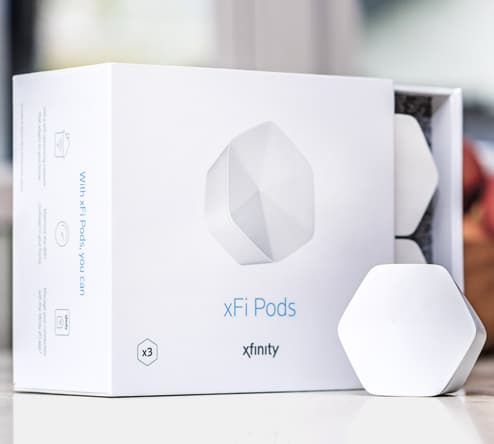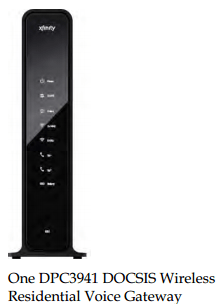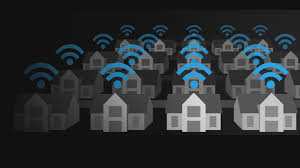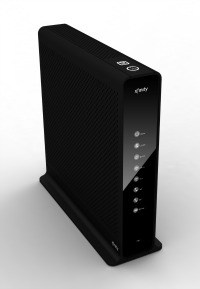 Comcast will increase capital spending in the first half of 2014 to hasten the rollout of its advanced X1 set-top boxes and new wireless gateways that provide public Wi-Fi from customer homes.
Comcast will increase capital spending in the first half of 2014 to hasten the rollout of its advanced X1 set-top boxes and new wireless gateways that provide public Wi-Fi from customer homes.
Comcast told investors Tuesday its increased spending will likely be offset by increased earnings from more subscribers and room for further price hikes over the course of the year.
First quarter consolidated revenue increased 13.7% to $17.4 billion over the past three months. Almost $11 billion of that comes from Comcast’s cable business. The company boosted cable earnings by 5.3% in the first quarter. Most of that came from a 4.5% increase in the average customer’s cable bill. Comcast subscribers, on average, pay $134 per month. They will pay even more by the end of the year.
Although Comcast’s head of its cable division Neil Smit noted the company implemented lower rate increases during the first quarter, there is room to boost prices further.
“I wouldn’t read any trends into it,” Smit said. “We took rate increases across the smaller percentage of our footprint this quarter than last year as well, but we target different offers to different customers and I don’t think we’re seeing it topping out. In the competitive arena, the offers are in the same ballpark, the promo prices go up and down, but the destination pricing is fairly similar across these various competitors.”

Roberts
Comcast continued to buck cord-cutting trends and added 24,000 new video customers in the quarter, a major improvement over the 25,000 it lost at the same time last year. Comcast believes its new X1 platform and aggressive customer retention efforts are responsible for winning and keeping cable television customers. Ongoing speed enhancements in Comcast’s broadband division won the company 383,000 new Internet customers in the last three months. Broadband is Comcast’s biggest money-maker, and revenues increased a further 9% during the quarter owing to customer growth, rate hikes, and customers choosing higher-speed tiers. By the end of the quarter, 38% of Comcast’s residential customers subscribed to at least 50Mbps service, showing growing demand for higher speed Internet.
Sources tell Stop the Cap! Comcast intends to further expand its trial of usage caps (Comcast prefers to call them “usage thresholds”) to more markets this year. Comcast has settled on 300GB usage allowances for most broadband products in current test markets, charging $10 for each additional allotment of 50GB as an overlimit fee. Comcast has avoided trials of usage caps in areas where Verizon FiOS delivers significant competition. Verizon has no usage caps on either their DSL or fiber broadband products.
Comcast also picked up 142,000 new phone customers in the quarter, mostly from those subscribing to aggressively priced triple play service bundle promotions. Around 155,000 new triple play customers signed up over the last three months.
At the end of the first quarter, 68% of Comcast customers took at least two products and 36% took three products, compared to 33% at the end of last year’s first quarter.
Brian Roberts, CEO of Comcast, said there were several factors that fueled Comcast’s growth during the quarter, starting with its advanced X1 set-top box platform, which offers a better television experience and makes finding things to watch easier. If customers have an X1, Roberts told investors, they are less likely to drop cable television service.

X1
“These positive early results reinforce our decision to accelerate our X1 deployment this year, and we are now adding 15,000 to 20,000 X1 boxes per day, which is double our rate of deployment from just six months ago,” Roberts told analysts. “Additionally, we are now rolling out a new XFINITY TV app, which enables our customers to live stream virtually their entire television lineup on any IP device in the home and watch DVR recordings in the home or on the go.”
Although usage caps remain controversial, Comcast has been aggressive about increasing broadband speeds at least once a year.
“In broadband, we recently increased speeds again for the 13th time in 12 years,” Roberts offered. “Doubling speeds in our Blast products to 105Mbps, while our Extreme tier moved up to 150Mbps for customers in the northeast. And we’re not stopping there. Our focus on wireless gateway deployment is adding utility to our customers while at the same time helping us create the largest Wi-Fi footprint in the U.S. with over one million public Wi-Fi hotspots currently available to our customers.”
 Although Comcast’s first quarter capital expenditures increased $51 million (or 4.6%) to $1.1 billion (10.6% of cable revenue versus 10.7% in the first quarter of 2013), the cable company returned even more money to shareholders. In the first quarter, the company boosted return of capital by 35% to $1.3 billion. Comcast repurchased its own shares of stock totaling $750 million and paid $508 million in dividends for the quarter.
Although Comcast’s first quarter capital expenditures increased $51 million (or 4.6%) to $1.1 billion (10.6% of cable revenue versus 10.7% in the first quarter of 2013), the cable company returned even more money to shareholders. In the first quarter, the company boosted return of capital by 35% to $1.3 billion. Comcast repurchased its own shares of stock totaling $750 million and paid $508 million in dividends for the quarter.
In 2014, Comcast will invest 14% of cable revenue (compared to 12.9% in 2013) to accelerate the deployment of X1 and wireless gateways, increase network capacity and continue to invest in expansion of business services and XFINITY Home. But it will spend far more than that placating shareholders. If Comcast wins support to buy Time Warner Cable, Comcast intends to increase its stock repurchase plan by $2.5 billion. The company earlier committed it would spend $3 billion on repurchasing its own shares, for an expected total of $5.5 billion during 2014.
When a company repurchases its own shares, it reduces the number of shares held by the public. That in turn means that if profits remain the same, the earnings per share increase. It also boosts the value of the massive portfolios of Comcast stock held by executives as part of their compensation packages.
[flv]http://www.phillipdampier.com/video/Comcast Introducing the X1 Platform from XFINITY 4-14.mp4[/flv]
Comcast produced this video showing off its X1 platform and new set-top boxes. (1:47)
 Comcast customers receiving inadequate Wi-Fi coverage while using a company-provided wireless gateway can now buy a mesh-style wireless solution starting at $119.
Comcast customers receiving inadequate Wi-Fi coverage while using a company-provided wireless gateway can now buy a mesh-style wireless solution starting at $119.

 Subscribe
Subscribe In an effort to keep up with increasing bandwidth demands on customers’ home networks, Comcast has
In an effort to keep up with increasing bandwidth demands on customers’ home networks, Comcast has  Comcast will increase capital spending in the first half of 2014 to hasten the rollout of its advanced X1 set-top boxes and new wireless gateways that provide public Wi-Fi from customer homes.
Comcast will increase capital spending in the first half of 2014 to hasten the rollout of its advanced X1 set-top boxes and new wireless gateways that provide public Wi-Fi from customer homes.

 Although Comcast’s first quarter capital expenditures increased $51 million (or 4.6%) to $1.1 billion (10.6% of cable revenue versus 10.7% in the first quarter of 2013), the cable company returned even more money to shareholders. In the first quarter, the company boosted return of capital by 35% to $1.3 billion. Comcast repurchased its own shares of stock totaling $750 million and paid $508 million in dividends for the quarter.
Although Comcast’s first quarter capital expenditures increased $51 million (or 4.6%) to $1.1 billion (10.6% of cable revenue versus 10.7% in the first quarter of 2013), the cable company returned even more money to shareholders. In the first quarter, the company boosted return of capital by 35% to $1.3 billion. Comcast repurchased its own shares of stock totaling $750 million and paid $508 million in dividends for the quarter. Comcast customers using the company’s growing network of Wi-Fi network hotspots will have their usage tracked to their broadband accounts, opening the door for Comcast to count wireless use against a customer’s future monthly usage allowance.
Comcast customers using the company’s growing network of Wi-Fi network hotspots will have their usage tracked to their broadband accounts, opening the door for Comcast to count wireless use against a customer’s future monthly usage allowance. Xfinity WiFi Neighborhood Hotspots – In June of last year, Comcast announced its plans to create millions of WiFi access points for its customers through a neighborhood hotspot initiative. Comcast is the first major ISP in the country to deploy this innovative technology. This new initiative gives customers with Xfinity Wireless Gateways an additional “xfinitywifi” signal (or SSID) in their home that is completely separate and distinct from the private and secure home WiFi signal. Offered at no additional cost, the additional WiFi signal will allow visiting Xfinity Internet subscribers instant, easy access to fast and reliable WiFi without the need to share the home’s private network password and without an impact to the home subscriber’s speed. And since visitors sign in with their own Xfinity credentials, their usage and activities are tied back to their own accounts, not the homeowner’s.
Xfinity WiFi Neighborhood Hotspots – In June of last year, Comcast announced its plans to create millions of WiFi access points for its customers through a neighborhood hotspot initiative. Comcast is the first major ISP in the country to deploy this innovative technology. This new initiative gives customers with Xfinity Wireless Gateways an additional “xfinitywifi” signal (or SSID) in their home that is completely separate and distinct from the private and secure home WiFi signal. Offered at no additional cost, the additional WiFi signal will allow visiting Xfinity Internet subscribers instant, easy access to fast and reliable WiFi without the need to share the home’s private network password and without an impact to the home subscriber’s speed. And since visitors sign in with their own Xfinity credentials, their usage and activities are tied back to their own accounts, not the homeowner’s.
